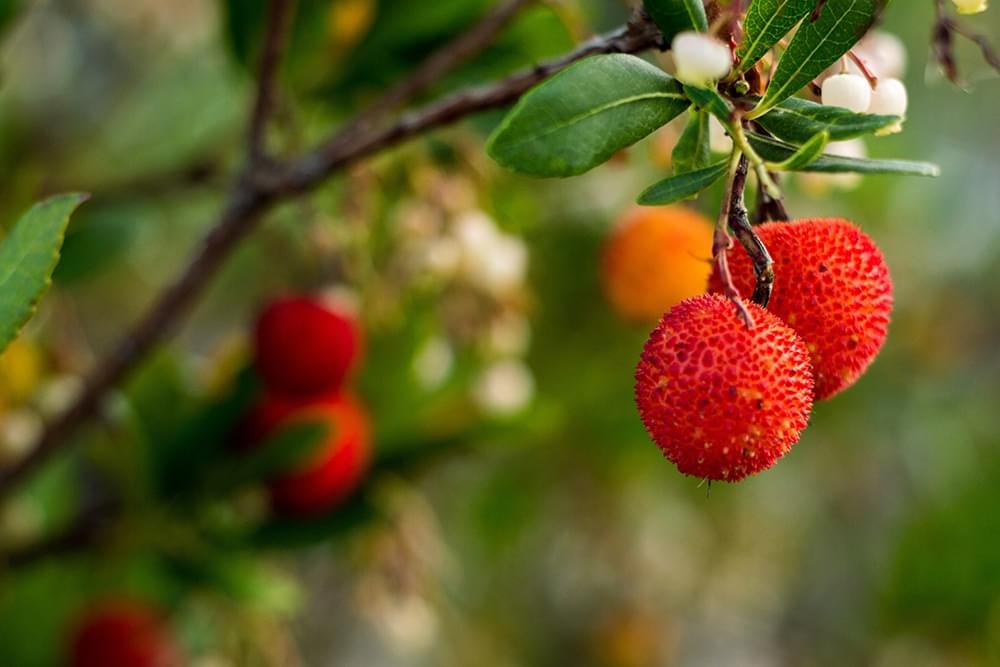
The Italian Strawberry Tree, scientifically known as Arbutus unedo, offers a fascinating blend of ornamental beauty and practical utility, making it a cherished addition to diverse garden landscapes. This comprehensive article delves into the botanical characteristics, ecological significance, cultivation tips, and uses of the Italian Strawberry Tree, providing gardeners and nature enthusiasts alike with a thorough understanding of this unique plant.
Native to the Mediterranean region and Western Europe, the Italian Strawberry Tree is a member of the Ericaceae family, which includes other well-known plants like the azalea and rhododendron. Despite its common name, it is not directly related to the common strawberry; instead, it earns its name from the red, strawberry-like appearance of its fruits.
Arbutus unedo is an evergreen shrub or small tree that typically grows to about 5-10 meters in height, although some specimens can reach up to 15 meters under ideal conditions. Its bark is smooth and reddish-brown, peeling on older branches to reveal a fresh, vibrant layer underneath. The leaves are dark green, glossy, and leathery, with a serrated margin, remaining on the tree throughout the year.
The flowers, which appear in the fall, are bell-shaped, white to a slight pink, and hang in small clusters. They are hermaphroditic, containing both male and female parts, which allows for self-pollination although cross-pollination by bees leads to higher fruit production. The fruit, which matures in about 12 months, overlaps with the flowering of the next season, resulting in the tree simultaneously bearing flowers and fruit in autumn.
The Italian Strawberry Tree plays a significant role in its native habitat. It thrives in Mediterranean climates, characterized by mild, wet winters and hot, dry summers. The tree is well adapted to fire-prone environments; its seeds can germinate readily after wildfire incidents, contributing to the regeneration of its habitat.
The flowers are a vital source of nectar for bees and other pollinating insects, particularly in late fall when other nectar sources are scarce. The fruits attract a variety of birds and mammals, which play a crucial role in seed dispersal. This ecological interaction highlights the tree's importance in sustaining the local biodiversity.
Growing an Italian Strawberry Tree is relatively straightforward, making it suitable for both novice and experienced gardeners. It prefers well-drained soils and can tolerate a range of soil types, from clay to loam and sandy soils, provided they are not waterlogged. While it thrives best in full sun, it can also adapt to partial shade, making it versatile for different garden settings.
Watering should be moderate; the tree is drought-tolerant once established but benefits from occasional watering during extremely dry periods. It requires minimal pruning, which is generally limited to removing dead or diseased wood and shaping young trees to form a strong structure.
The fruits of the Italian Strawberry Tree are edible and have a sweet, slightly gritty texture, similar to figs. They can be eaten fresh or used in the preparation of jams, jellies, and liquors. The fruit is rich in antioxidants, vitamins, and minerals, offering various health benefits. The leaves and bark have medicinal properties, traditionally used in folk medicine to treat hypertension and diabetes.
In landscaping, the Italian Strawberry Tree is prized for its year-round aesthetic appeal. It serves as an excellent ornamental plant due to its attractive foliage, peeling bark, and colorful fruits. The tree can be used as a standalone specimen, part of a mixed border, or in wildlife gardens to attract birds and beneficial insects.
The Italian Strawberry Tree, with its unique combination of beauty, resilience, and utility, is a remarkable choice for gardeners looking to enrich their landscape with something that is both eye-catching and ecologically valuable. Whether planted for its fruit, its medicinal qualities, or simply its ornamental features, Arbutus unedo stands out as a testament to nature's versatility and splendor. Enthusiasts of Mediterranean gardens and sustainable landscapes will find the Italian Strawberry Tree a worthy and rewarding addition.
-01.jpg)
More Details